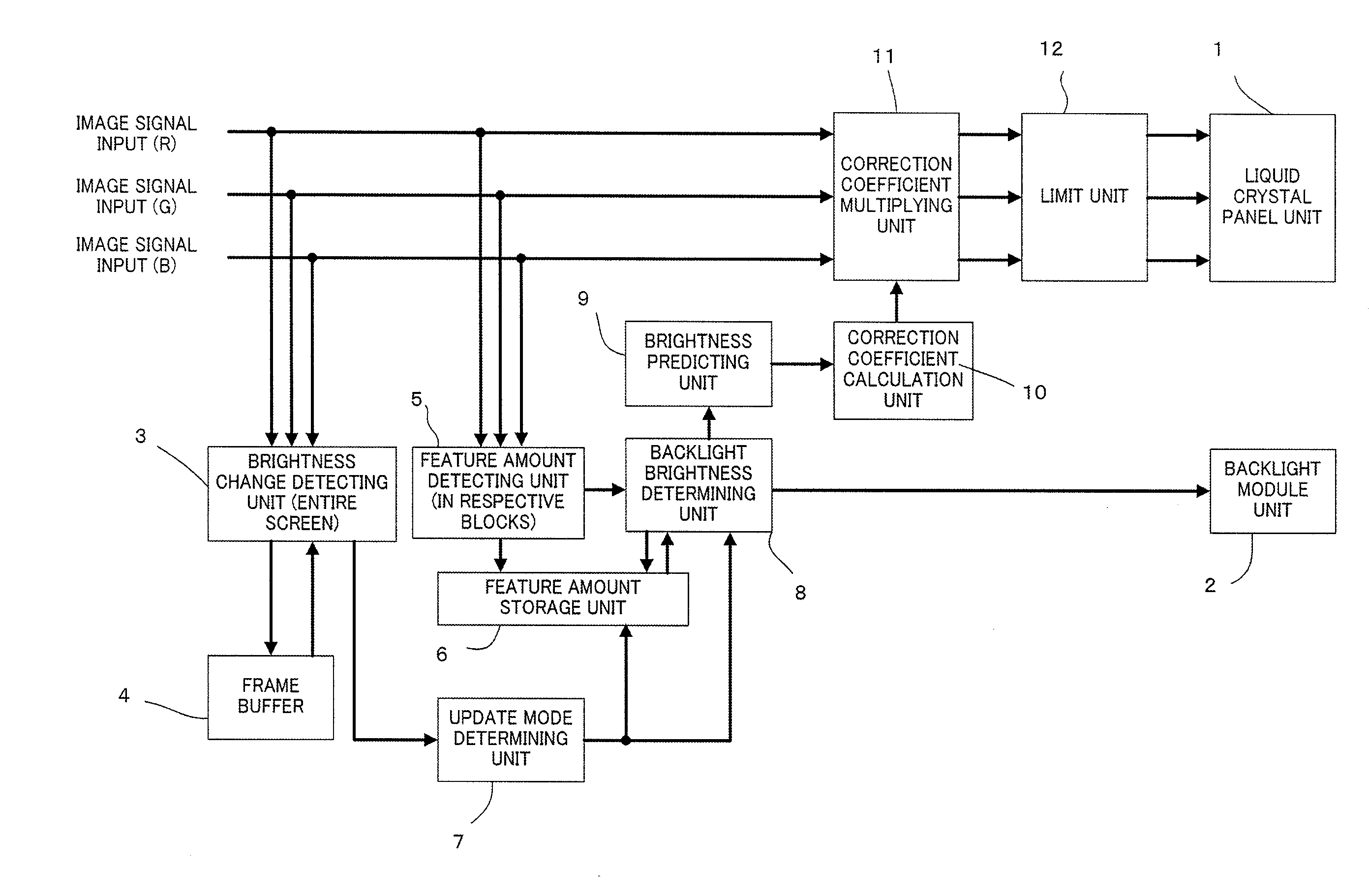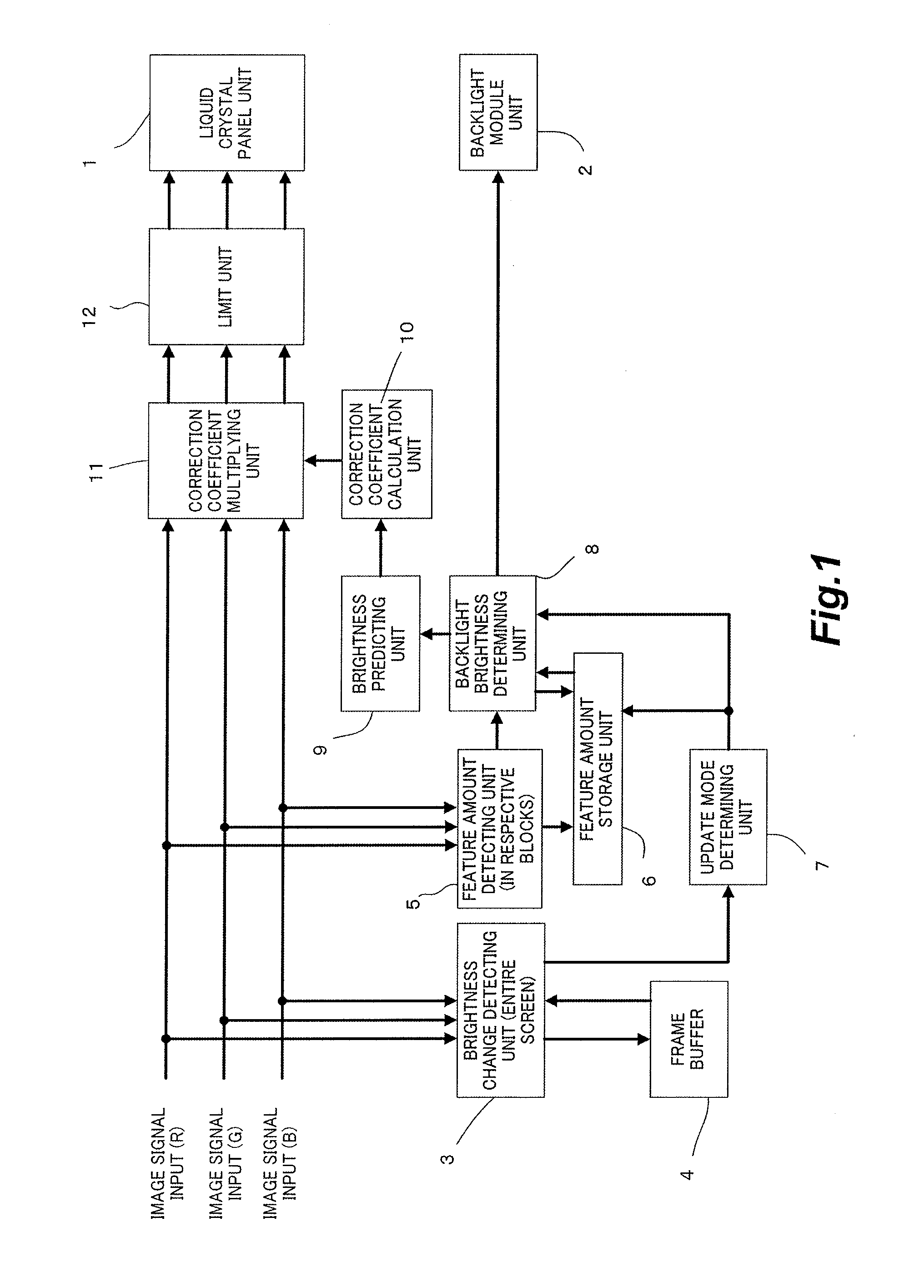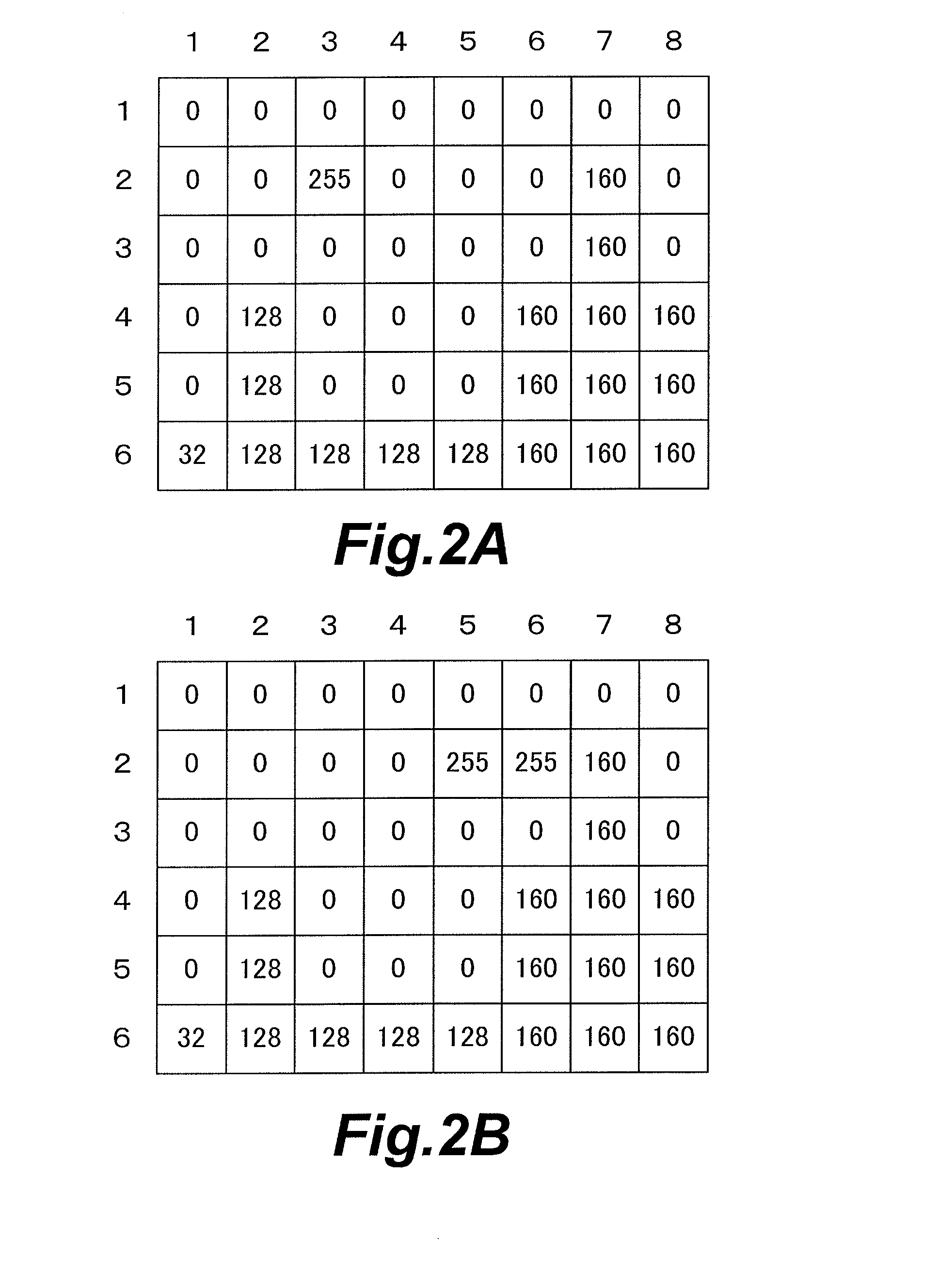Image display apparatus and method of controlling same
a technology of image display and display screen, which is applied in the direction of instruments, computing, electric digital data processing, etc., can solve the problems of disturbance to the user, achieve accurate reproduction of input images, reproduce brightness of cursors, and reproduce input images accurately
- Summary
- Abstract
- Description
- Claims
- Application Information
AI Technical Summary
Benefits of technology
Problems solved by technology
Method used
Image
Examples
first embodiment
[0024]Embodiments of the present invention will be described with reference to the drawings.
[0025]An image display apparatus according to a first embodiment calculates the number of pixels (hereinafter referred to a motion amount) of which the brightness has changed among the pixels of the entire screen. The image display apparatus detects a cursor movement by determining whether the motion amount results from a cursor movement based on whether the motion amount is equal to or smaller than a largest number of pixels of which the brightness can change when an object (auxiliary object) for assisting a user's operation, such as a cursor (for example, a mouse cursor) moves. The image display apparatus generates a feature amount if no cursor were present in a current frame from a feature amount of the current frame and a stored feature amount of a past frame when the cursor movement is detected. The image display apparatus determines a brightness of a backlight from the generated feature...
second embodiment
[0058]In the first embodiment, the feature amount when no cursor was present in the current frame is calculated from the feature amount of the current frame and the stored feature amount of the past frame, and the backlight brightness to be applied to displaying of the current frame is determined based on the feature amount. In the second embodiment, the backlight brightness when no cursor was present in the current frame is calculated from the backlight brightness determined from the feature amount of the current frame and a past backlight brightness. By doing so, similarly to the first embodiment, an image display apparatus that performs local dimming control according to an input image to improve the contrast can suppress both the halo effect and the flicker effect when a high brightness cursor moves in a dark region of the image.
[0059]FIG. 7 illustrates a functional block diagram of an image display apparatus according to the second embodiment. The image display apparatus illust...
third embodiment
[0073]In the first and second embodiments, the number of pixels of which the brightness has changed between adjacent frames is counted, and the counted value is compared with a threshold to detect a scene in which a cursor has moved. In a third embodiment, the cursor itself is detected as an object to detect a scene in which the cursor has moved. Moreover, a feature amount when no cursor was present in the current frame is calculated from a feature amount of the current frame and a stored feature amount of a past frame, and a backlight brightness to be applied to displaying of the current frame is determined based on the feature amount. By doing so, similarly to the first and second embodiments, an image display apparatus that performs local dimming control according to an input image to improve the contrast can suppress both the halo effect and the flicker effect when a high brightness cursor moves in a dark region of the image. Moreover, since the cursor itself is recognized, erro...
PUM
 Login to View More
Login to View More Abstract
Description
Claims
Application Information
 Login to View More
Login to View More - R&D
- Intellectual Property
- Life Sciences
- Materials
- Tech Scout
- Unparalleled Data Quality
- Higher Quality Content
- 60% Fewer Hallucinations
Browse by: Latest US Patents, China's latest patents, Technical Efficacy Thesaurus, Application Domain, Technology Topic, Popular Technical Reports.
© 2025 PatSnap. All rights reserved.Legal|Privacy policy|Modern Slavery Act Transparency Statement|Sitemap|About US| Contact US: help@patsnap.com



